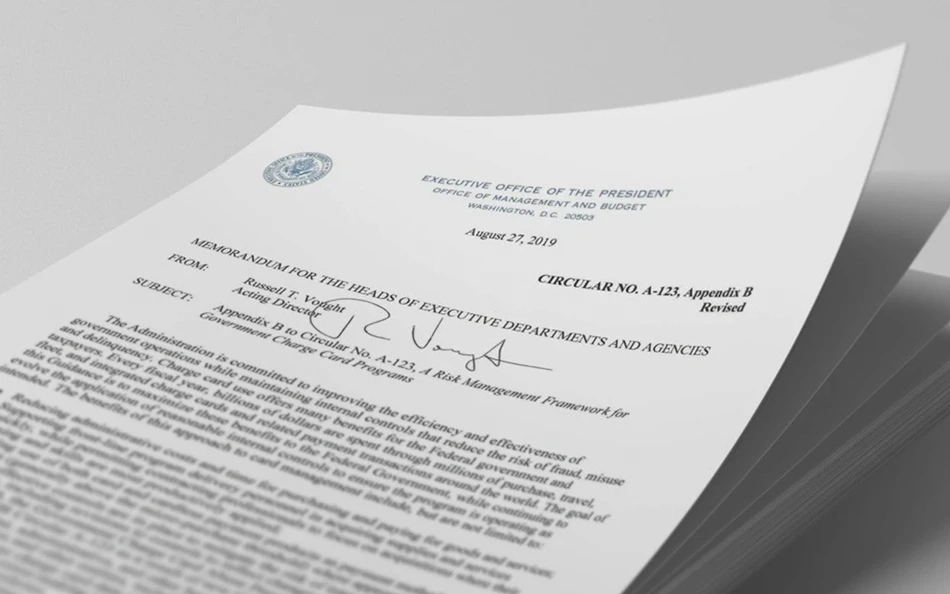Accountability is the first topic in our 3-part series highlighting guidelines pertaining to Accountability, Compliance, and Transparency as contained in OMB Circular A-123 Appendix B, a Risk Management Framework for Government Charge Card Programs.
The recently-revised OMB Circular A-123 Appendix B, combined with unfunded mandates for paperless government and cloud computing, point to one conclusion: it is time for P-Card Programs to automate. New complexities for P-Card administrative officers necessitate a fresh technological approach to reduce the administrative burdens that negatively impact card issuance, acceptance, and to restore the intended conveniences in P-Card Programs.
OMB A-123 Appendix B consolidates all government-wide charge card program management requirements and guidance, including guidance issued by the OMB, GSA, GAO, and the Department of the Treasury. The Circular establishes best practices and minimum requirements for government purchase card programs.
Purchase Card Innovation
As outlined in Chapter 1 of the Appendix B, government charge card use offers many benefits to agencies such as reducing administrative costs and time for purchasing goods and services, enabling simple acquisitions more quickly, and availability of refunds offered by charge card providers. Most importantly, the opportunity to expand the use of purchase cards in innovative ways to enhance acquisition efficiency.
The flip side of these real benefits of charge card usage are the increasing number of controls required of the program which necessitate a management plan. Each individual agency is responsible for creating and maintaining their own oversight procedures for purchase cards. This includes accountability to stakeholders both within their own organization and externally to GSA, OMB, GAO, and the Treasury. A number of minimum requirements for purchase card management are included in Chapter 3 of the Circular, which may result in undue oversight burdens that can easily cancel out the utility of the card itself.
Accuracy in Accountability
Accountability is fundamentally reliant on compliance workflows based upon clear roles, permissions, and duties that are delegated across multiple people to avoid the possibility of collusion to commit fraud, waste, and abuse. Compliance automation removes the opportunity for unauthorized financial commitments by any party, provides 3-way matching of all transactions, and provides a method for accurate settlement and closeout of obligated funds.
If you are concerned about compliance workflows and recognize the need to solidify your agency’s program in light of the new accountability guidelines, take a look at Actus in the FedRAMP Marketplace.

